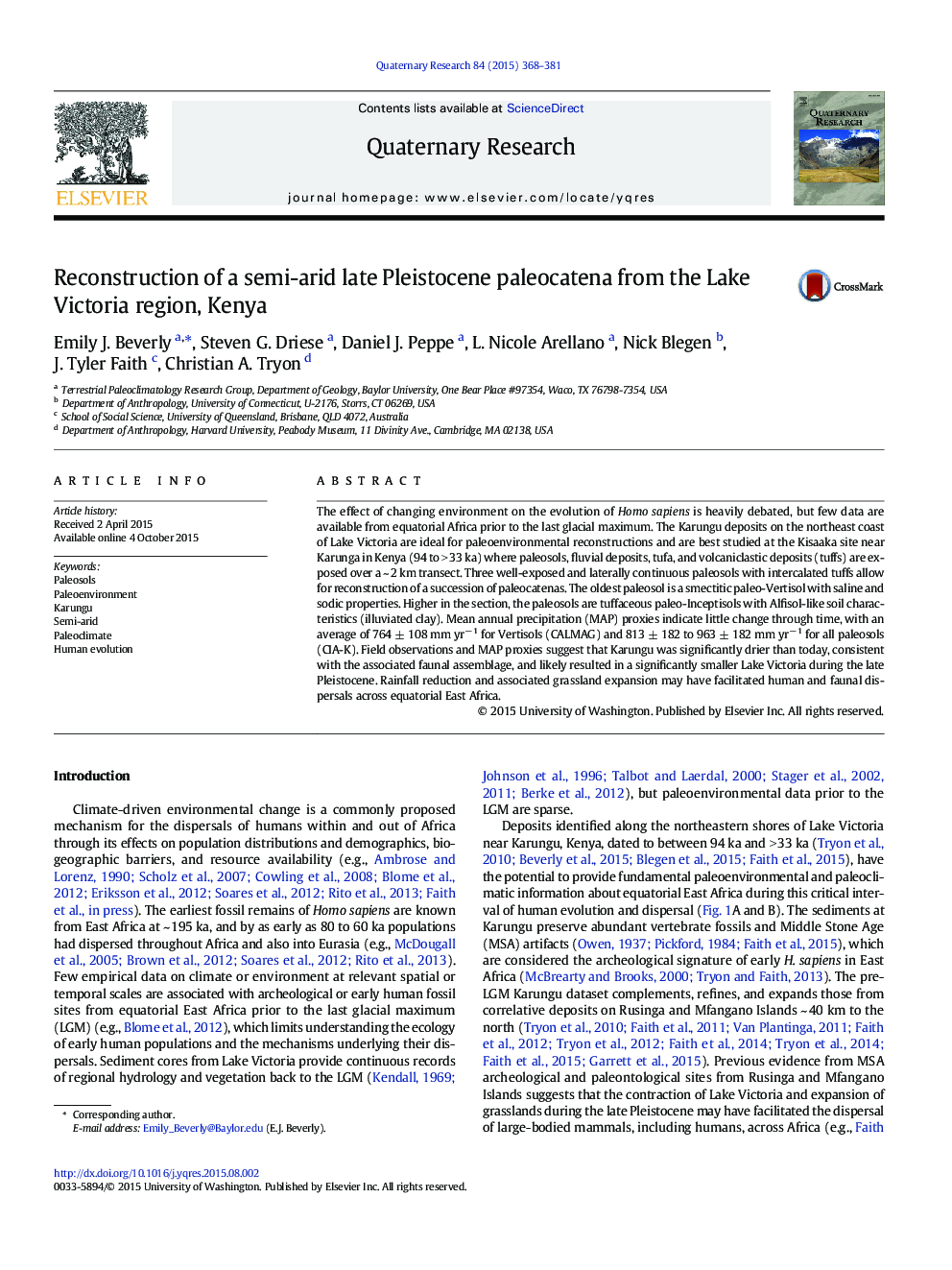| کد مقاله | کد نشریه | سال انتشار | مقاله انگلیسی | نسخه تمام متن |
|---|---|---|---|---|
| 1045044 | 944796 | 2015 | 14 صفحه PDF | دانلود رایگان |
عنوان انگلیسی مقاله ISI
Reconstruction of a semi-arid late Pleistocene paleocatena from the Lake Victoria region, Kenya
ترجمه فارسی عنوان
بازسازی نیمه خشک اواخر پلیدوستن پائولوکتن از منطقه دریاچه ویکتوریا، کنیا
دانلود مقاله + سفارش ترجمه
دانلود مقاله ISI انگلیسی
رایگان برای ایرانیان
کلمات کلیدی
موضوعات مرتبط
مهندسی و علوم پایه
علوم زمین و سیارات
زمین شناسی
چکیده انگلیسی
The effect of changing environment on the evolution of Homo sapiens is heavily debated, but few data are available from equatorial Africa prior to the last glacial maximum. The Karungu deposits on the northeast coast of Lake Victoria are ideal for paleoenvironmental reconstructions and are best studied at the Kisaaka site near Karunga in Kenya (94 to > 33 ka) where paleosols, fluvial deposits, tufa, and volcaniclastic deposits (tuffs) are exposed over a ~ 2 km transect. Three well-exposed and laterally continuous paleosols with intercalated tuffs allow for reconstruction of a succession of paleocatenas. The oldest paleosol is a smectitic paleo-Vertisol with saline and sodic properties. Higher in the section, the paleosols are tuffaceous paleo-Inceptisols with Alfisol-like soil characteristics (illuviated clay). Mean annual precipitation (MAP) proxies indicate little change through time, with an average of 764 ± 108 mm yrâ 1 for Vertisols (CALMAG) and 813 ± 182 to 963 ± 182 mm yrâ 1 for all paleosols (CIA-K). Field observations and MAP proxies suggest that Karungu was significantly drier than today, consistent with the associated faunal assemblage, and likely resulted in a significantly smaller Lake Victoria during the late Pleistocene. Rainfall reduction and associated grassland expansion may have facilitated human and faunal dispersals across equatorial East Africa.
ناشر
Database: Elsevier - ScienceDirect (ساینس دایرکت)
Journal: Quaternary Research - Volume 84, Issue 3, November 2015, Pages 368-381
Journal: Quaternary Research - Volume 84, Issue 3, November 2015, Pages 368-381
نویسندگان
Emily J. Beverly, Steven G. Driese, Daniel J. Peppe, L. Nicole Arellano, Nick Blegen, J. Tyler Faith, Christian A. Tryon,
